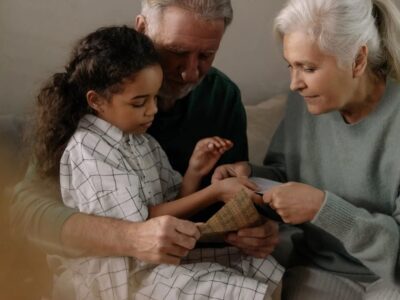As we know, many diseases and chronic conditions are functions of the aging process and, while no one knows how long they will live, building robust longevity assumptions into your retirement plan and stress-testing them against various scenarios can help secure your retirement future. When planning for your retirement years, it’s wise to ensure that your retirement drawings can at least keep pace with annual inflation so that the purchasing power of your rand does not lose value over time. Doing the same for your anticipated healthcare expenditure is not always easy as one needs to account for not only medical inflation but the likelihood that one’s healthcare needs will increase with age.
As people grow older, their ability to see, hear, communicate, walk, remember, concentrate and care for themselves is affected, and the costs associated with caring for such persons can be high. In the ‘Profile of older persons in SA’ prepared by Stats SA it was estimated that around 38% of South Africans over the age of 60 use chronic medication, around 20% use assistive devices such as spectacles, 10% wear hearing aids and 5% use wheelchairs. These assistive devices and other aids are expensive and not always covered by medical aid. While a walking frame costs between 700 and R3 000, hearing aids can cost anywhere between R5 000 and R60 000 per ear, wheelchairs can cost between R2 000 and R50 000, and mobility scooters up to R60 000. Further, the report found that over 50% of people aged 60 and over live in extended households which reinforces the fundamental role that family plays during one’s retirement years, especially as one ages. The same report shows that 11% of over 60s have problems communicating, 45% have difficulty walking or climbing stairs, and 34% have problems remembering or concentrating, making some form of at-home care essential.
Another big cost driver in retirement is that of treating mental illness, especially depression and anxiety which, according to the London-based Institute of Economic Affairs, increases by about 40% after formal retirement – often as a result of recently retired purposes losing their sense of purpose and the social interactions of the workplace. A Wits/Medical Research Council Developmental Pathways for Health Research Unit (DPHRU) from 2022 showed that older adults who are single, widowed, divorced or separated have worse mental health than those who are not, with one of the researchers noting that ‘depression is more prevalent in later life, presumably because of a decline in health and the challenges of retirement.’
According to the UK’s Mental Health Foundation, those living alone because of bereavement – something that is likely to happen during retirement – can make people more vulnerable to mental health issues, with their study showing that retirement increases the chances of suffering from clinical depression by about 40%, and of having at least one diagnosed physical illness by 60%. According to a 2022 national South African survey* the prevalence of probable depression was highest among respondents 65 years or older, with 39% of this age group showing signs of probable depression.
Another huge healthcare cost driver in retirement is dementia which, being an acquired degenerative brain syndrome, is the leading cause of disability and dependency in the elderly, with age being the single biggest risk factor for developing this disease. Sadly, dementia statistics in South Africa are not accurate although it is estimated that between 20% and 40% of South Africans over age 65 have dementia. The economic, social, and medical costs of caring for someone with dementia or Alzheimer’s disease are staggering – especially considering that the average life expectancy from diagnosis is between 8 and 12 years. Further, while dementia is a Prescribed Minimum Benefit, medical schemes are only require to cover admission for the initial diagnosis of dementia and management of acute psychotic symptoms for one week and, thereafter, medical schemes are not obliged to cover the medical costs of dementia treatment. It is anticipated that the economic and medical costs associated with caring for someone with dementia which can range between R3 million and R7 million over the expected life span of the sufferer.
When it comes to caring for a family member who has been diagnosed with dementia, for many the only option is either home-based care or specialised care facilities – with the latter being largely unaffordable. As a result, many families undertake to care for the family member at home – although many completely underestimate the enormity of the task they’re taking on. Having a dementia patient live at home is disruptive and all-consuming and can put emotional strain on the whole family. Many family members who assume the role of carer attest to suffering from burnout, fatigue, and general deterioration in health. In addition to this, family members who double as carers for the dementia sufferer are often forced to cut back on their work hours or resign altogether – with this loss of income having a devastating effect on the whole household.
It is estimated that in the last five years of life, total healthcare spend for dementia patients is almost 60% greater than the costs associated with death from other diseases, including cancer and heart disease – although keep in mind that this doesn’t account for the costs incurred in the years before the diagnosis is made. Post-diagnosis expenses include geriatrician consultations (which start at around R3 000 for a one-hour consultation), prescribed medicines, personal care items, adult diapers and therapy. Full-time home nursing can range between R16 000 to R30 000 per month, while full-time accommodation at a high-end dementia care facility can cost between R50 000 and R75 000 per month. Other hidden costs include home alterations, safety-related expenses, security gates, panic buttons and other lifestyle modifications.
Your current good health aside, there is no way of knowing what the future holds for you – especially as you grow older. The risk of suffering from illnesses such as cancer, dementia, heart disease, arterial disease, arthritis, cataracts, osteoporosis, and hypertension generally increase with age, and it is advisable to plan as realistically as possible for such eventualities. An experienced financial advisor should be able to help you plan for your post-retirement healthcare expenses without having to rely on hope as a strategy.
Have a super day.
Sue
*The prevalence of probable depression and probable anxiety, and associations with adverse childhood experiences and socio-demographics: A national survey in South Africa (October 2022)








